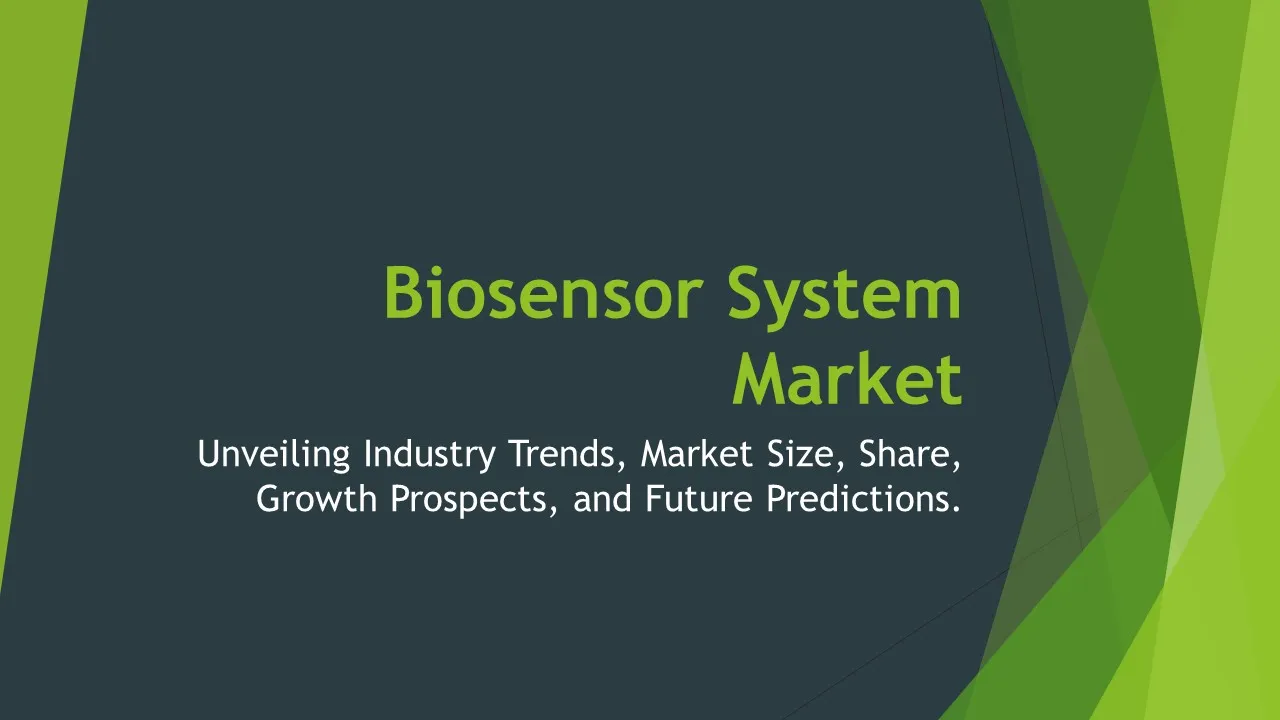Agriculture Sensors
Agriculture Sensors Market Segments - by Product Type (Soil Sensors, Water Sensors, Climate Sensors, Crop Sensors, Livestock Sensors), Application (Yield Monitoring, Soil Monitoring, Climate Monitoring, Livestock Management, Irrigation Management), Distribution Channel (Direct Sales, Indirect Sales), Technology Type (Remote Sensing Technology, IoT Technology, GPS Technology, RFID Technology, Telematics Technology), and Region (North America, Europe, Asia Pacific, Latin America, Middle East & Africa) - Global Industry Analysis, Growth, Share, Size, Trends, and Forecast 2025-2035
- Report Preview
- Table Of Content
- Segments
- Methodology
Agriculture Sensors Market Outlook
The global Agriculture Sensors Market is projected to reach approximately USD 9.5 billion by 2035, expanding at a compound annual growth rate (CAGR) of around 12.5% from 2025 to 2035. This robust growth can be attributed to the increasing adoption of precision agriculture practices aimed at optimizing crop yields and minimizing resource wastage. Factors such as the rising global population leading to higher food demand, advancements in sensor technologies, and a growing emphasis on sustainable farming practices are significantly driving market growth. Moreover, government initiatives promoting smart farming and the integration of Internet of Things (IoT) solutions in agriculture further bolster the adoption of advanced sensor technologies. The demand for data-driven decision-making in farming operations is facilitating the market's expansion, enhancing the overall efficiency and productivity of agricultural practices.
Growth Factor of the Market
The Agriculture Sensors Market is significantly driven by the rapid technological advancements in agricultural practices. The growing emphasis on precision farming is becoming increasingly crucial as farmers look for efficient methods to manage crops and livestock. The advancement of sensor technologies, such as IoT-enabled devices, is enabling real-time monitoring of various agricultural parameters, which is crucial for making informed decisions. Additionally, the rising awareness regarding sustainable agricultural practices is encouraging farmers to adopt technologies that reduce water and fertilizer usage, ultimately leading to cost savings and improved crop yield. Furthermore, the integration of big data analytics in agriculture is allowing for more precise farming strategies, thus contributing to the market's growth. Urbanization trends and the resultant decrease in arable land are pushing the need for innovative agricultural solutions to ensure food security, making agriculture sensors increasingly vital. The continuous investment in research and development by agritech companies also plays a significant role in shaping the market landscape.
Key Highlights of the Market
- Significant growth projected in the Agriculture Sensors Market, reaching USD 9.5 billion by 2035.
- Increasing adoption of precision agriculture practices to optimize resource usage.
- Technological advancements in sensor technologies, particularly IoT and GPS.
- Heightened focus on sustainable farming and government initiatives promoting smart agriculture.
- Rising demand for real-time data analytics in agricultural practices.
By Product Type
Soil Sensors:
Soil sensors are pivotal in agriculture as they provide critical data about soil conditions, including moisture levels, temperature, and nutrient content. These sensors help farmers understand the specific needs of their crops based on real-time soil conditions. By utilizing soil sensors, farmers can optimize irrigation practices, ensuring that crops receive the right amount of water without wastage. This data-driven approach not only enhances crop yield but also contributes to sustainable farming practices by preventing over-fertilization and under-watering. The growing emphasis on precision agriculture is driving the demand for soil sensors, making them an essential tool for modern agricultural practices.
Water Sensors:
Water sensors are integral to effective irrigation management in agriculture. These devices monitor water levels and quality in irrigation systems, ensuring that crops receive adequate hydration without excessive water usage. By implementing water sensors, farmers can reduce costs associated with water consumption and improve their environmental footprint. Moreover, the integration of these sensors with automated irrigation systems allows for precise control over watering schedules based on real-time data, ensuring optimal growth conditions for crops. As water scarcity becomes a pressing global issue, the demand for water sensors is expected to increase significantly in the coming years.
Climate Sensors:
Climate sensors play an essential role in monitoring environmental conditions that affect agricultural productivity. These sensors measure variables such as temperature, humidity, and atmospheric pressure, providing farmers with critical information for making informed cultivation decisions. By understanding the micro-climate of their fields, farmers can optimize planting schedules, protect crops from adverse weather, and improve overall yield. Climate sensors are becoming increasingly sophisticated, with many now incorporating wireless technology to provide real-time updates and alerts. The growing need for climate-smart agriculture is driving the adoption of climate sensors in the agricultural sector.
Crop Sensors:
Crop sensors are designed to monitor the health and growth of crops throughout their life cycle. These sensors utilize various technologies, such as multispectral imaging, to assess crop conditions, identifying stress factors like pests or nutrient deficiencies. By leveraging crop sensors, farmers can implement targeted interventions, which enhances efficiency and minimizes resource wastage. The insights derived from crop sensor data allow for precise application of fertilizers and pesticides, promoting sustainable farming practices. The increasing focus on maximizing agricultural output with minimal environmental impact is augmenting the demand for crop sensors globally.
Livestock Sensors:
Livestock sensors are crucial for monitoring and managing animal health and productivity. These devices track vital parameters such as temperature, heart rate, and activity levels, providing farmers with a comprehensive overview of their livestock's well-being. By utilizing livestock sensors, farmers can identify potential health issues early, ensuring timely intervention and improving overall herd management. Additionally, these sensors can enhance breeding programs by offering insights into animal behavior and reproductive cycles. The increasing focus on animal welfare and productivity in the livestock sector is propelling the demand for advanced livestock sensors, making them a vital component of modern agriculture.
By Application
Yield Monitoring:
Yield monitoring applications leverage sensor technologies to provide farmers with critical data on crop performance and yield potential. By utilizing yield monitoring systems, farmers can assess the effectiveness of their cultivation practices, allowing for adjustments to optimize output. These systems track various parameters such as moisture levels, nutrient availability, and environmental conditions, enabling data-driven decision-making. The insights gained from yield monitoring allow farmers to implement targeted practices for enhancing crop quality and quantity, making them an essential tool for maximizing agricultural productivity. As the global focus on food security intensifies, the demand for yield monitoring applications is expected to rise significantly.
Soil Monitoring:
Soil monitoring applications play a vital role in ensuring optimal soil health and productivity. By employing soil sensors, farmers can assess various soil properties, including pH levels, moisture content, and nutrient availability. This information is crucial for making informed decisions regarding crop selection, fertilization, and irrigation practices. Soil monitoring not only helps improve crop yields but also contributes to sustainable farming by preventing soil degradation. With the growing awareness of soil health's impact on agricultural productivity, the demand for soil monitoring applications is expected to increase significantly, fostering the development of advanced sensor technologies.
Climate Monitoring:
Climate monitoring applications utilize sensor technologies to provide real-time data on environmental conditions that impact agriculture. By monitoring factors such as temperature, humidity, and rainfall, farmers can make informed decisions regarding planting schedules, irrigation needs, and pest management strategies. Climate monitoring enables farmers to adapt their practices to changing weather patterns, ensuring optimal conditions for crop growth. As climate change poses challenges to agriculture, the demand for climate monitoring applications is expected to grow, facilitating the adoption of climate-smart agricultural practices.
Livestock Management:
Livestock management applications are designed to enhance the health and productivity of farm animals. By employing advanced sensor technologies, farmers can monitor various parameters of their livestock, including health indicators, feeding habits, and reproductive cycles. This information allows for timely interventions and better management practices, ultimately improving overall herd productivity. Livestock management applications also facilitate traceability and compliance with food safety regulations, ensuring high-quality meat and dairy products. As the focus on animal welfare and productivity increases in the agricultural sector, the demand for livestock management applications is anticipated to grow significantly.
Irrigation Management:
Irrigation management applications utilize sensor data to optimize water usage in agricultural practices. By monitoring soil moisture levels, weather conditions, and crop water requirements, these applications enable farmers to implement efficient irrigation schedules. This not only conserves water resources but also enhances crop health by providing the right amount of water at the right time. With water scarcity becoming a critical global issue, the adoption of irrigation management applications is expected to rise significantly as farmers seek sustainable solutions to meet their irrigation needs. The growing emphasis on precision agriculture further drives the demand for advanced irrigation management technologies.
By Distribution Channel
Direct Sales:
Direct sales channels in the Agriculture Sensors Market allow manufacturers to sell their products directly to consumers, including farmers and agricultural businesses. This approach fosters a closer relationship between producers and end-users, enabling manufacturers to understand customer needs and preferences better. Direct sales often lead to enhanced customer service and support, as farmers can receive personalized solutions tailored to their specific requirements. Moreover, this distribution channel can facilitate quicker product deployment and implementation on the farm, increasing the efficiency of agricultural operations. As the demand for precision agriculture grows, direct sales channels are expected to play a vital role in reaching target customers effectively.
Indirect Sales:
Indirect sales channels encompass various intermediaries, such as distributors, retailers, and online platforms, which help manufacturers reach a broader audience in the Agriculture Sensors Market. This distribution method allows companies to leverage existing networks and expertise in reaching diverse customer segments, thereby enhancing product availability and accessibility. Indirect sales channels are particularly beneficial for companies looking to expand into new geographical areas without significant investment in infrastructure. By collaborating with established distributors, manufacturers can gain valuable market insights and customer feedback, which can inform product development and marketing strategies. As the agricultural sector evolves, indirect sales channels will continue to be crucial in facilitating the widespread adoption of agriculture sensors.
By Technology Type
Remote Sensing Technology:
Remote sensing technology has revolutionized the Agriculture Sensors Market by enabling farmers to gather data about their fields from a distance. This technology employs satellites or drones equipped with sensors to monitor crop health, soil conditions, and environmental factors. By analyzing the data collected, farmers can make informed decisions regarding irrigation, fertilization, and pest management. The ability to cover large areas quickly and efficiently makes remote sensing an invaluable tool in precision agriculture. The growing adoption of drones and satellite technology in agriculture is driving the demand for remote sensing solutions globally.
IoT Technology:
The Internet of Things (IoT) technology has transformed agriculture by enabling the interconnectivity of devices and sensors, allowing for real-time data collection and analysis. IoT-enabled agriculture sensors facilitate efficient monitoring of crop and livestock conditions, leading to better resource management and optimized yields. This technology empowers farmers to make data-driven decisions, improving the overall efficiency of agricultural operations. As IoT technology continues to advance, its integration into agriculture is expected to enhance productivity and sustainability, driving significant growth in the Agriculture Sensors Market.
GPS Technology:
GPS technology plays a crucial role in modern agriculture by providing precise location data for various farming operations. Agriculture sensors equipped with GPS capabilities enable farmers to map their fields accurately, assess soil variability, and implement precision farming techniques. This technology allows for the targeted application of inputs, such as fertilizers and pesticides, ensuring optimal resource utilization. The increasing need for accurate positioning in agriculture is propelling the demand for GPS-enabled sensors, as farmers seek to enhance efficiency and productivity while minimizing environmental impact.
RFID Technology:
Radio-Frequency Identification (RFID) technology is increasingly being used in the Agriculture Sensors Market to track and manage assets in real-time. RFID sensors can monitor inventory levels, livestock movements, and equipment utilization, providing farmers with accurate data for effective decision-making. This technology enhances traceability in the agricultural supply chain, ensuring compliance with food safety standards and improving overall operational efficiency. As the demand for transparency and accountability in agriculture grows, the adoption of RFID technology is expected to rise significantly, driving improvements in farm management.
Telematics Technology:
Telematics technology integrates telecommunications and monitoring systems to provide farmers with valuable insights into their equipment and operations. By harnessing telematics, agriculture sensors can track machinery performance, fuel consumption, and maintenance schedules, enabling farmers to optimize their operations. This technology enhances productivity by minimizing downtime and improving resource allocation. As the agricultural sector increasingly embraces digital transformation, the demand for telematics-enabled sensors is anticipated to grow, offering farmers a comprehensive view of their operational efficiencies.
By Region
The Agriculture Sensors Market is witnessing varying growth trends across different regions, with North America and Europe leading the charge due to their advanced agricultural practices and early adoption of technology. In North America, the market is valued at approximately USD 3 billion in 2025, with a projected CAGR of around 11% through 2035, driven by the increasing emphasis on precision farming and robust government support for agricultural innovation. Europe follows closely, with a market value of about USD 2.5 billion, as European farmers are increasingly adopting smart farming techniques to address challenges related to climate change and sustainability.
In the Asia Pacific region, the Agriculture Sensors Market is expected to experience rapid growth, valued at around USD 2 billion in 2025, with a CAGR of 14% through 2035. This growth can be attributed to the region's vast agricultural landscape and the rising population demanding higher food production. Countries like India and China are at the forefront of adopting agricultural technologies to enhance productivity and ensure food security. Meanwhile, Latin America and the Middle East & Africa are also showing promising growth trajectories, driven by increasing investments in smart agriculture and the need for efficient resource management in agriculture.
Opportunities
The Agriculture Sensors Market presents numerous opportunities for growth and innovation, particularly in the development of advanced sensor technologies tailored to meet the unique needs of farmers worldwide. As the agricultural sector increasingly embraces digital transformation, the demand for IoT-enabled sensors and data analytics solutions is on the rise. This offers companies in the market a chance to innovate and provide solutions that cater to the specific challenges faced by farmers, such as water scarcity, soil degradation, and climate change. Additionally, the integration of artificial intelligence (AI) and machine learning into agricultural sensors can further enhance their capabilities, providing predictive analytics that empowers farmers to make informed decisions based on real-time data. The push for sustainability and environmentally friendly practices in agriculture is also creating opportunities for sensor technologies that promote resource efficiency and minimize chemical usage.
Moreover, the growing trend of urban agriculture and vertical farming presents new avenues for the Agriculture Sensors Market. As cities expand and arable land decreases, innovative technologies that support urban farming initiatives will become increasingly valuable. Sensors that monitor indoor farming environments, hydroponics systems, and vertical gardens can significantly enhance productivity and sustainability in urban agriculture. Additionally, partnerships between technology providers, agritech startups, and traditional agricultural businesses are likely to spur innovation and accelerate the adoption of sensor technologies across different farming systems. The ongoing research and development efforts will further create opportunities for emerging sensor technologies, paving the way for a smarter and more efficient agricultural sector.
Threats
Despite the promising outlook for the Agriculture Sensors Market, there are several threats that could hinder growth and adoption. One significant challenge is the high initial cost associated with implementing advanced sensor technologies, which can deter small and medium-sized farmers from investing in these solutions. While larger agricultural operations may have the capital to adopt sophisticated sensor systems, smaller farmers may struggle to justify the expense, potentially leading to a disparity in technology adoption within the sector. Additionally, the rapid pace of technological advancements may create a knowledge gap among farmers, especially those who may not be familiar with digital tools and data analytics. This knowledge gap can impede the effective utilization of agriculture sensors and limit their potential benefits.
Furthermore, privacy and data security concerns regarding the use of agricultural sensors and connected devices pose a significant threat to the market. As sensor technologies collect vast amounts of data, ensuring the protection of sensitive information becomes paramount. Any breaches or misuse of data could lead to a loss of trust among farmers, potentially impacting the adoption of these technologies. Lastly, environmental factors such as climate change can pose challenges to agriculture, leading to unpredictable conditions that may affect sensor performance and reliability. Addressing these threats will be crucial for ensuring the sustained growth of the Agriculture Sensors Market.
Competitor Outlook
- Trimble Inc.
- Ag Leader Technology
- Topcon Positioning Systems
- John Deere
- AgJunction Inc.
- Raven Industries
- Sentera
- Valley Irrigation
- Climate Corporation
- Soil Moisture Corp.
- Syngenta AG
- Sensaphone
- Davis Instruments
- Farmers Edge Inc.
- Hexagon AG
The competitive landscape of the Agriculture Sensors Market is characterized by a mix of established players and emerging startups, all vying for a share of this rapidly growing sector. Companies are increasingly focusing on innovation and technological advancements to differentiate their products and offer unique value propositions to farmers. Established firms, such as John Deere and Trimble Inc., leverage their strong brand recognition and extensive distribution networks to maintain a competitive edge in the market. These companies are investing significantly in research and development to enhance the capabilities of their sensor technologies, ensuring they meet the evolving needs of modern agriculture.
Emerging startups, on the other hand, are focusing on niche segments within the Agriculture Sensors Market, offering specialized solutions that address specific agricultural challenges. For instance, companies like Sentera and Farmers Edge Inc. are developing advanced data analytics platforms that integrate with sensor technologies to provide farmers with actionable insights. These startups often foster partnerships with agricultural organizations and research institutions to enhance their product offerings and gain market traction. As competition intensifies, companies are also exploring strategic mergers and acquisitions to expand their market presence and access new technologies, further shaping the competitive dynamics of the Agriculture Sensors Market.
Key players in the Agriculture Sensors Market are also placing significant emphasis on sustainability and environmentally friendly practices. As consumers become more conscious of sustainable agriculture, companies are developing sensors that promote efficient resource utilization, such as water and fertilizers. For example, Raven Industries and Valley Irrigation are focusing on precision irrigation technologies that reduce water consumption while maximizing crop yields. This trend towards sustainability not only addresses consumer demands but also aligns with global efforts to combat climate change, fostering a more resilient agricultural sector. The ongoing evolution of the Agriculture Sensors Market is expected to create a dynamic competitive landscape, where innovation and sustainability will be at the forefront of growth strategies.
1 Appendix
- 1.1 List of Tables
- 1.2 List of Figures
2 Introduction
- 2.1 Market Definition
- 2.2 Scope of the Report
- 2.3 Study Assumptions
- 2.4 Base Currency & Forecast Periods
3 Market Dynamics
- 3.1 Market Growth Factors
- 3.2 Economic & Global Events
- 3.3 Innovation Trends
- 3.4 Supply Chain Analysis
4 Consumer Behavior
- 4.1 Market Trends
- 4.2 Pricing Analysis
- 4.3 Buyer Insights
5 Key Player Profiles
- 5.1 Sentera
- 5.1.1 Business Overview
- 5.1.2 Products & Services
- 5.1.3 Financials
- 5.1.4 Recent Developments
- 5.1.5 SWOT Analysis
- 5.2 Hexagon AG
- 5.2.1 Business Overview
- 5.2.2 Products & Services
- 5.2.3 Financials
- 5.2.4 Recent Developments
- 5.2.5 SWOT Analysis
- 5.3 John Deere
- 5.3.1 Business Overview
- 5.3.2 Products & Services
- 5.3.3 Financials
- 5.3.4 Recent Developments
- 5.3.5 SWOT Analysis
- 5.4 Sensaphone
- 5.4.1 Business Overview
- 5.4.2 Products & Services
- 5.4.3 Financials
- 5.4.4 Recent Developments
- 5.4.5 SWOT Analysis
- 5.5 Syngenta AG
- 5.5.1 Business Overview
- 5.5.2 Products & Services
- 5.5.3 Financials
- 5.5.4 Recent Developments
- 5.5.5 SWOT Analysis
- 5.6 Trimble Inc.
- 5.6.1 Business Overview
- 5.6.2 Products & Services
- 5.6.3 Financials
- 5.6.4 Recent Developments
- 5.6.5 SWOT Analysis
- 5.7 AgJunction Inc.
- 5.7.1 Business Overview
- 5.7.2 Products & Services
- 5.7.3 Financials
- 5.7.4 Recent Developments
- 5.7.5 SWOT Analysis
- 5.8 Raven Industries
- 5.8.1 Business Overview
- 5.8.2 Products & Services
- 5.8.3 Financials
- 5.8.4 Recent Developments
- 5.8.5 SWOT Analysis
- 5.9 Davis Instruments
- 5.9.1 Business Overview
- 5.9.2 Products & Services
- 5.9.3 Financials
- 5.9.4 Recent Developments
- 5.9.5 SWOT Analysis
- 5.10 Farmers Edge Inc.
- 5.10.1 Business Overview
- 5.10.2 Products & Services
- 5.10.3 Financials
- 5.10.4 Recent Developments
- 5.10.5 SWOT Analysis
- 5.11 Valley Irrigation
- 5.11.1 Business Overview
- 5.11.2 Products & Services
- 5.11.3 Financials
- 5.11.4 Recent Developments
- 5.11.5 SWOT Analysis
- 5.12 Climate Corporation
- 5.12.1 Business Overview
- 5.12.2 Products & Services
- 5.12.3 Financials
- 5.12.4 Recent Developments
- 5.12.5 SWOT Analysis
- 5.13 Soil Moisture Corp.
- 5.13.1 Business Overview
- 5.13.2 Products & Services
- 5.13.3 Financials
- 5.13.4 Recent Developments
- 5.13.5 SWOT Analysis
- 5.14 Ag Leader Technology
- 5.14.1 Business Overview
- 5.14.2 Products & Services
- 5.14.3 Financials
- 5.14.4 Recent Developments
- 5.14.5 SWOT Analysis
- 5.15 Topcon Positioning Systems
- 5.15.1 Business Overview
- 5.15.2 Products & Services
- 5.15.3 Financials
- 5.15.4 Recent Developments
- 5.15.5 SWOT Analysis
- 5.1 Sentera
6 Market Segmentation
- 6.1 Agriculture Sensors Market, By Application
- 6.1.1 Yield Monitoring
- 6.1.2 Soil Monitoring
- 6.1.3 Climate Monitoring
- 6.1.4 Livestock Management
- 6.1.5 Irrigation Management
- 6.2 Agriculture Sensors Market, By Product Type
- 6.2.1 Soil Sensors
- 6.2.2 Water Sensors
- 6.2.3 Climate Sensors
- 6.2.4 Crop Sensors
- 6.2.5 Livestock Sensors
- 6.3 Agriculture Sensors Market, By Technology Type
- 6.3.1 Remote Sensing Technology
- 6.3.2 IoT Technology
- 6.3.3 GPS Technology
- 6.3.4 RFID Technology
- 6.3.5 Telematics Technology
- 6.4 Agriculture Sensors Market, By Distribution Channel
- 6.4.1 Direct Sales
- 6.4.2 Indirect Sales
- 6.1 Agriculture Sensors Market, By Application
7 Competitive Analysis
- 7.1 Key Player Comparison
- 7.2 Market Share Analysis
- 7.3 Investment Trends
- 7.4 SWOT Analysis
8 Research Methodology
- 8.1 Analysis Design
- 8.2 Research Phases
- 8.3 Study Timeline
9 Future Market Outlook
- 9.1 Growth Forecast
- 9.2 Market Evolution
10 Geographical Overview
- 10.1 Europe - Market Analysis
- 10.1.1 By Country
- 10.1.1.1 UK
- 10.1.1.2 France
- 10.1.1.3 Germany
- 10.1.1.4 Spain
- 10.1.1.5 Italy
- 10.1.1 By Country
- 10.2 Asia Pacific - Market Analysis
- 10.2.1 By Country
- 10.2.1.1 India
- 10.2.1.2 China
- 10.2.1.3 Japan
- 10.2.1.4 South Korea
- 10.2.1 By Country
- 10.3 Latin America - Market Analysis
- 10.3.1 By Country
- 10.3.1.1 Brazil
- 10.3.1.2 Argentina
- 10.3.1.3 Mexico
- 10.3.1 By Country
- 10.4 North America - Market Analysis
- 10.4.1 By Country
- 10.4.1.1 USA
- 10.4.1.2 Canada
- 10.4.1 By Country
- 10.5 Agriculture Sensors Market by Region
- 10.6 Middle East & Africa - Market Analysis
- 10.6.1 By Country
- 10.6.1.1 Middle East
- 10.6.1.2 Africa
- 10.6.1 By Country
- 10.1 Europe - Market Analysis
11 Global Economic Factors
- 11.1 Inflation Impact
- 11.2 Trade Policies
12 Technology & Innovation
- 12.1 Emerging Technologies
- 12.2 AI & Digital Trends
- 12.3 Patent Research
13 Investment & Market Growth
- 13.1 Funding Trends
- 13.2 Future Market Projections
14 Market Overview & Key Insights
- 14.1 Executive Summary
- 14.2 Key Trends
- 14.3 Market Challenges
- 14.4 Regulatory Landscape
Segments Analyzed in the Report
The global Agriculture Sensors market is categorized based on
By Product Type
- Soil Sensors
- Water Sensors
- Climate Sensors
- Crop Sensors
- Livestock Sensors
By Application
- Yield Monitoring
- Soil Monitoring
- Climate Monitoring
- Livestock Management
- Irrigation Management
By Distribution Channel
- Direct Sales
- Indirect Sales
By Technology Type
- Remote Sensing Technology
- IoT Technology
- GPS Technology
- RFID Technology
- Telematics Technology
By Region
- North America
- Europe
- Asia Pacific
- Latin America
- Middle East & Africa
Key Players
- Trimble Inc.
- Ag Leader Technology
- Topcon Positioning Systems
- John Deere
- AgJunction Inc.
- Raven Industries
- Sentera
- Valley Irrigation
- Climate Corporation
- Soil Moisture Corp.
- Syngenta AG
- Sensaphone
- Davis Instruments
- Farmers Edge Inc.
- Hexagon AG
- Publish Date : Jan 21 ,2025
- Report ID : EL-30009
- No. Of Pages : 100
- Format : |
- Ratings : 4.5 (110 Reviews)








